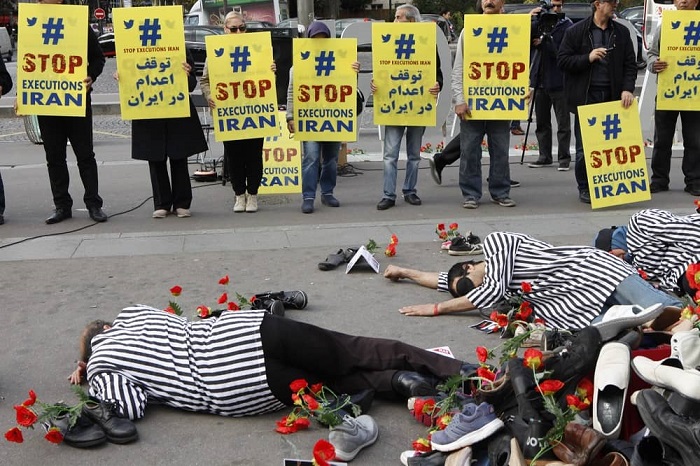
August 30 marks the International Day of the Disappeared, trying to draw attention to the fate of individuals imprisoned or perished unbeknownst to their relatives and loved ones.
The International Day of the Disappeared is celebrated on August 30 in an effort to raise awareness of the plight of people who were killed or imprisoned and their families were unaware of their whereabouts.“Today’s event took me back to the dark days of July and August 1988 in the Gohardasht prison and my last visit with my older brother Reza. In 1981, we were both arrested for sympathizing with the People’s Mojahedin of Iran (PMOI/MEK). I’ll never forget the hours of interrogation and torture Reza and I endured in the 1980s, along with tens of thousands of MEK supporters.
I was immediately sentenced to 11 years in prison, and I served the entire sentence,” said Mohammad Zand, a MEK member who survived the massacre.“I was overwhelmed with joy when I first met Reza after some years of being separated from him and being in another prison. Little did I know that this happiness was short-lived. In 1988, seven years into his sentence, my brother was killed as part of the regime’s nationwide massacre of political prisoners,” he continued.
Reza’s sentences were abruptly and arbitrarily changed to death sentences by ‘Death Commissions’ established in response to a fatwa from the founder of the regime, Ruhollah Khomeini, to eliminate the MEK, along with thousands of other prisoners throughout Iran.
“Reza and I were in Gohardasht prison, where Tehran’s ‘Death Commission’ sealed the fate of Reza and my friends and cellmates in a few minutes, after making sure they still supported the MEK. I was taken to this committee days after Reza’s execution and enquired about him; I was told he was hanged.”
“Years later, in 2020, I was called to testify in the trial of Hamid Noury, a prison official, and executioner who worked in Gohardasht.” His trial was moved from Sweden to Albania in order to hear the testimony of seven survivors of the 1988 massacre, including myself, who are MEK members and continue our struggle for freedom in the organization’s compound in Ashraf 3 near Tirana,” Zand explained.
On July 14, 2022, a Stockholm court issued its decision in the case of Hamid Noury, a former employee of Iran’s Gohardasht prison who was responsible for the torture and execution of political prisoners. In the summer of 1988, 90% of the 30,000 political prisoners killed were MEK supporters and members.
“His conviction filled all of us with joy and jubilation, and it was a watershed moment for the “Justice Seeking Movement for the 1988 Massacre Victims,” which the Iranian Resistance has been zealously pursuing for the past three decades,” he added. “However, we still have a long way to go.”
“Today we honor those fallen heroes and heroines who gave up their lives in 1988, but it seeing criminals who played major roles in the 1988 genocide holding high positions deeply hurts us. One of these criminals, Ebrahim Raisi, became the regime’s president in June 2021.”
Raisi intends to visit the United States to attend the United Nations, General Assembly. Allowing this thug to read his hate speech is an affront to the free world. Raisi should not be granted a visa by the US government. Instead, the United Nations and the United States should launch an investigation into the 1988 massacre and hold all perpetrators, including Raisi, accountable.
MEK Iran (follow us on Twitter and Facebook), Maryam Rajavi’s on her site, Twitter & Facebook, NCRI (Twitter & Facebook), and People’s Mojahedin Organization of Iran – MEK IRAN – YouTub

